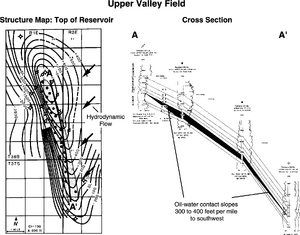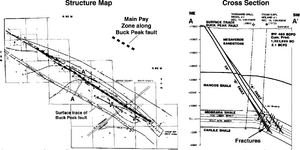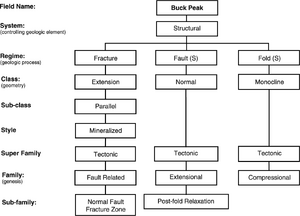Combination trap
| Exploring for Oil and Gas Traps | |

| |
| Series | Treatise in Petroleum Geology |
|---|---|
| Part | Traps, trap types, and the petroleum system |
| Chapter | Classification of exploration traps |
| Author | Richard R. Vincelette, Edward A. Beaumont, Norman H. Foster |
| Link | Web page |
| Store | AAPG Store |
Secondary or even tertiary trapping elements commonly modify the primary trapping agent. Structural traps may have a stratigraphic component or vice versa. Sometimes the distinction whether the trap belongs to one system or another is quite blurred. Traps with two or more trapping elements are called combination traps.
Primary trapping element
To determine what the primary trapping element is, consider each element of the trap and ask, “Would the trap exist if that element were not part of the trap?” We could also ask, “Which element would I look for first if I were exploring for this trap?”
Classifying combination traps informally
To classify a combination trap informally, list the primary trap element first, followed by secondary and tertiary trap elements. You can classify a combination trap informally in at least two different formats. For example, Upper Valley field, Utah, shown in the map and cross section below, could be classified informally as (1) a hydrodynamically modified anticlinal trap or as (2) a hydrodynamic/anticlinal trap.
Classifying combination traps formally
We classify a trap formally by listing the regimes, classes, and families for the primary, secondary, and (if necessary) tertiary systems. For example, the diagram below shows the formal classification for Upper Valley field.
Combination structural traps
Some structural traps are combinations of the three structural trap regimes: fold, fault, Structural traps and fracture. The Buck Peak field shown below is an example of a combination structural trap.
Buck peak formal classification
The diagram below shows the formal classification for the Buck Peak field, which is a combination structural trap.



